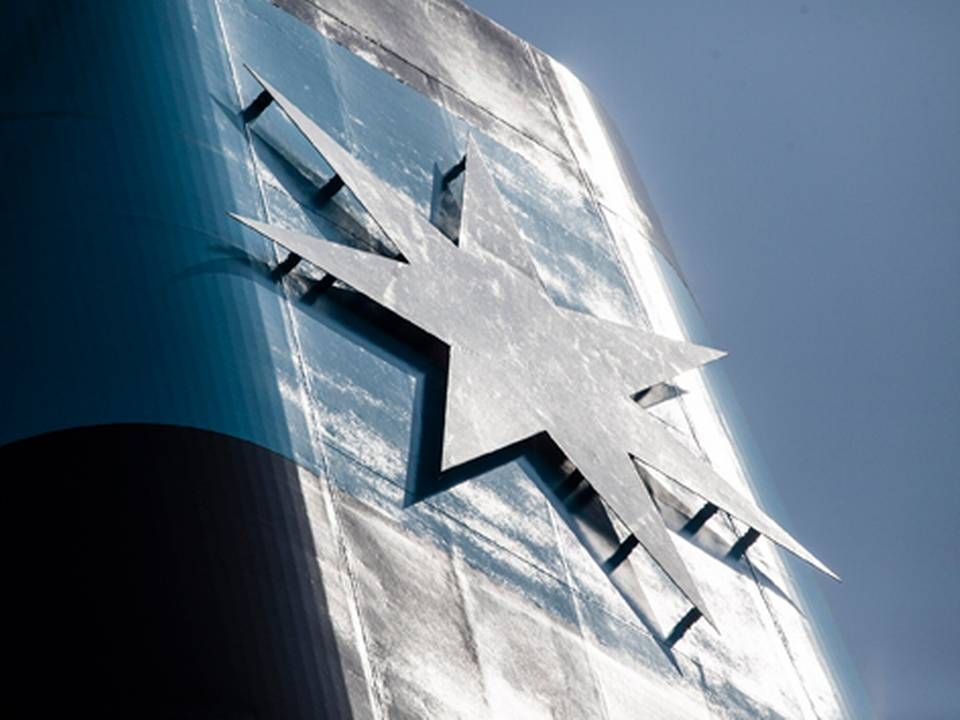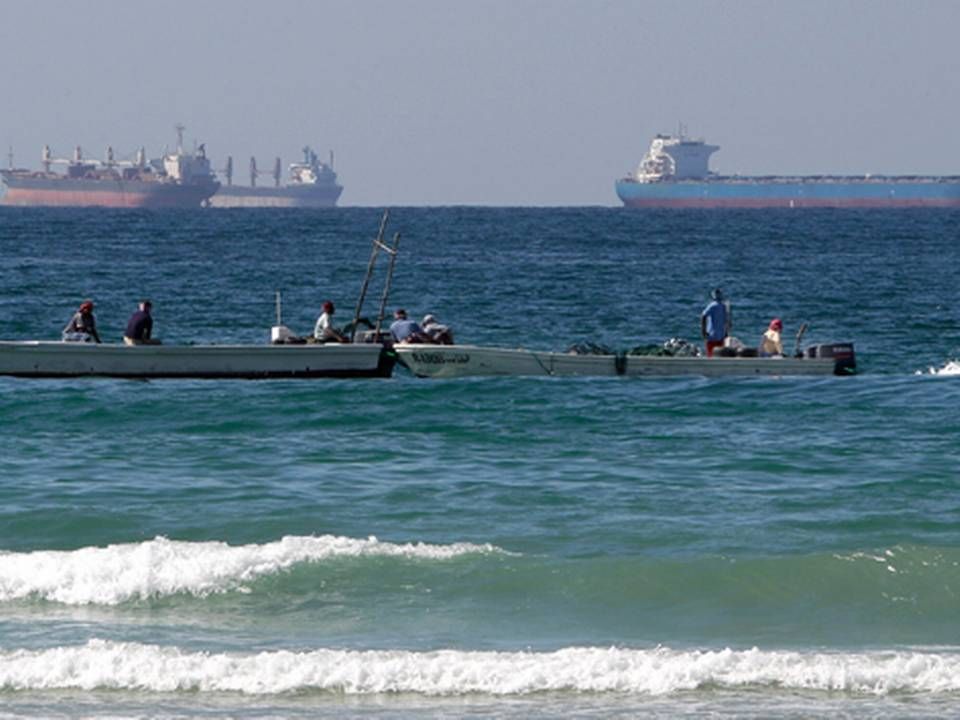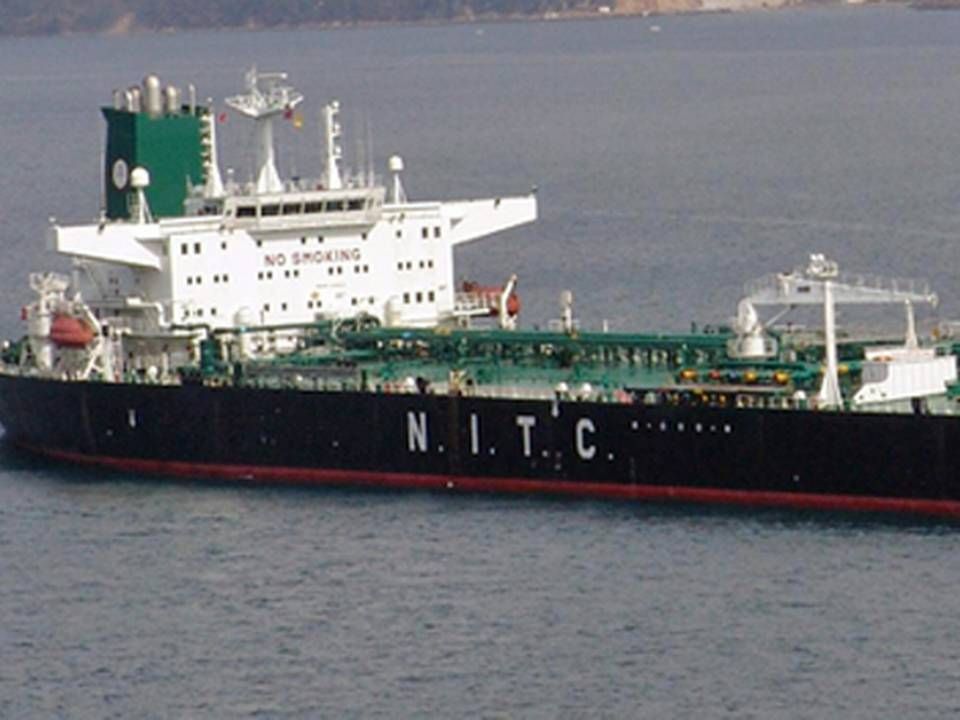This is Maersk Tigris' route through the Strait of Hormuz
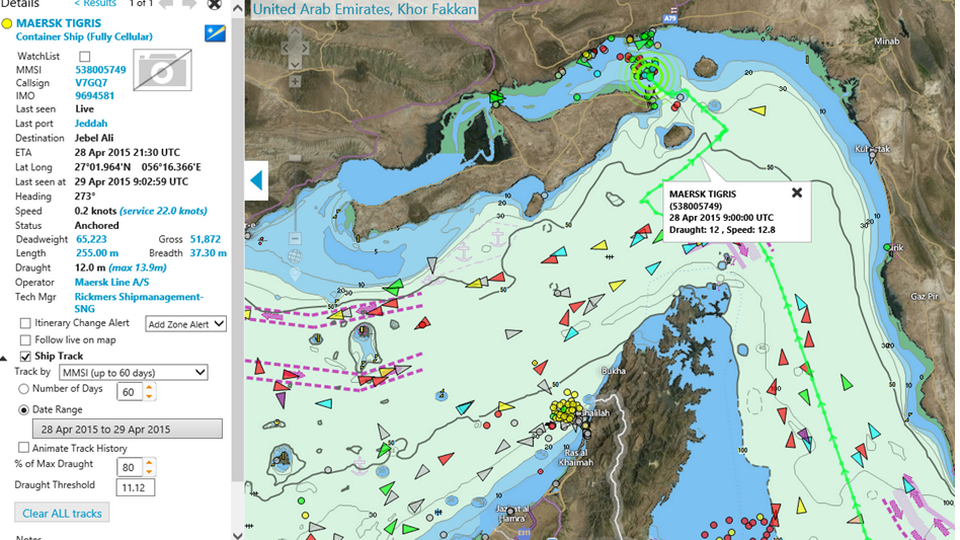
Container ship Maersk Tigris, which was detained by Iranian naval forces around 12.55 local time Tuesday after warning shots had been fired, was following a fixed route past Iranian waters as part of Maersk Line's so-called ME3 service between the Black Sea and the Persian Gulf.
The ship is on time charter at Maersk Line from Rickmers Shipmanagement, which is responsible for operating and crewing the ship, and both parties maintain and stress on Wednesday that Maersk Tigris was located in international waters when the vessel was detained by the Iranian naval forces and subsequently escorted to the port in Bandar Abbas.
The US Department of Defense, the Pentagon, informs on its website that Maersk Tigris was in Iranian territorial waters and was entering the Strait of Hormuz between the Persian Gulf and the Gulf of Oman in the Arabian Sea.
"The ship's captain was contacted by and ordered to continue into Iranian waters. He refused, and one of the naval force vessels fired shots across the bridge of Maersk Tigris," said Colonel Steve Warren of the US Navy after the dramatic incident.
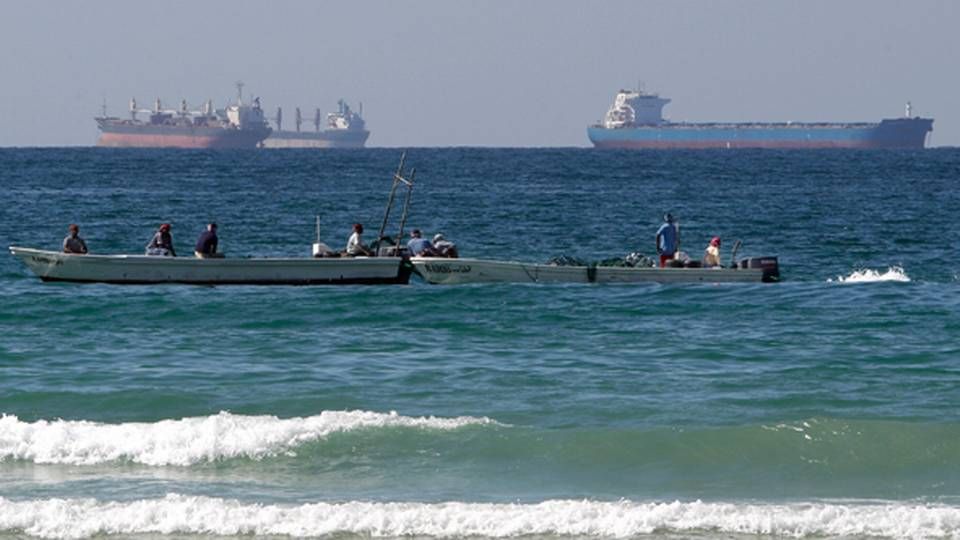
A Pentagon spokesman has also stressed that the Strait of Hormuz is located in Iran's territorial waters, 12 nautical miles from the shore of Iran. However, the very narrow strait is recognized as an international shipping lane, where the principle of "innocent passage" applies, which allows ships that comply with international maritime laws to pass through the narrow strait.
On Wednesday, Iranian media have reported that Maersk Tigris was arrested following a court order, as a local Iranian company claims to be owed money from Rickmers Shipmanagement.
Rickmers denies Iranian claims
A spokesman for Rickmers Shipmanagement, Cor Radings, tells ShippingWatch that the company is "completely unaware" of the accusations published in Iranian media.
He confirms that there is contact with the Iranian authorities, though he declines to specify who is talking to the authorities.
"We've been consulting with various parties in this situation," he says.
US forces in the region responded to distress signals from Maersk Tigris on Tuesday, and destroyer USS Farragut was subsequently dispatched to the region to monitor the situation along with surveillance aircrafts.
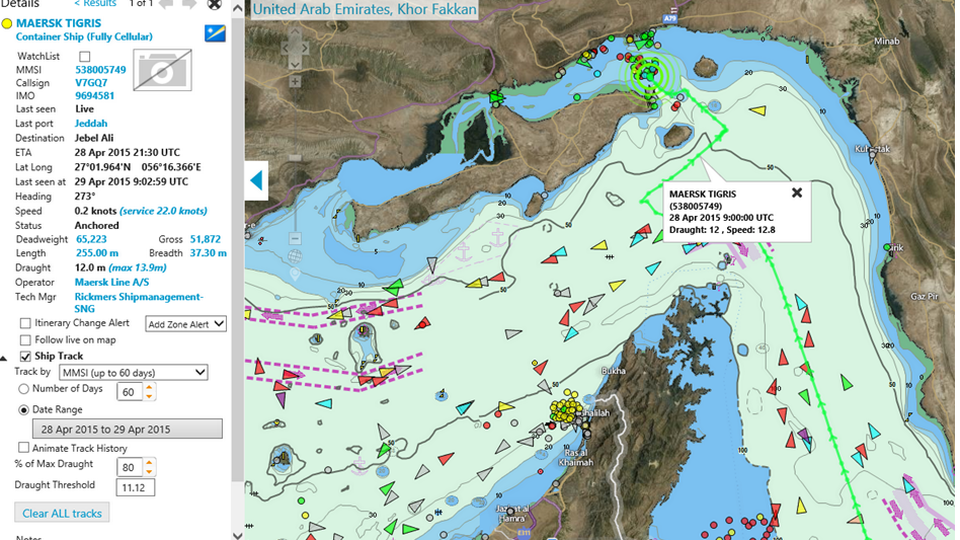
Maersk Tigris' route through the Strait of Hormuz (the green line). Click here for bigger graphic
Maersk Tigris sails under the Marshall Islands flag, an independent republic in the Pacific over which the US holds full security responsible.
The US along with four other large nations reached an agreement with Iran during Easter to monitor the country's nuclear program - an agreement that entails a full or partial repeal of the economic sanctions that have plagued Iran for years, and which the country's regime is eager to be rid of.
The negotiators from the involved parties must settle the final agreement, including the sanctions, ahead of a deadline on June 30th this year.
Iran detains cargo vessel Maersk Tigris
Iran's leader calls for sanctions to be lifted in one swoop
Related articles
Iran's leader calls for sanctions to be lifted in one swoop
For subscribers
EU maintains iron grip on Iranian shipping
For subscribers

